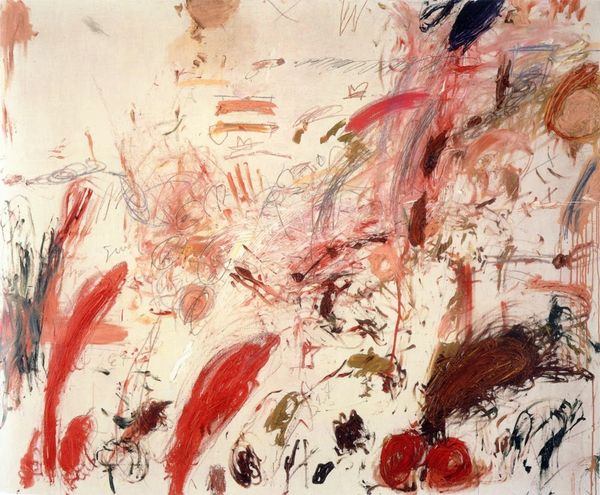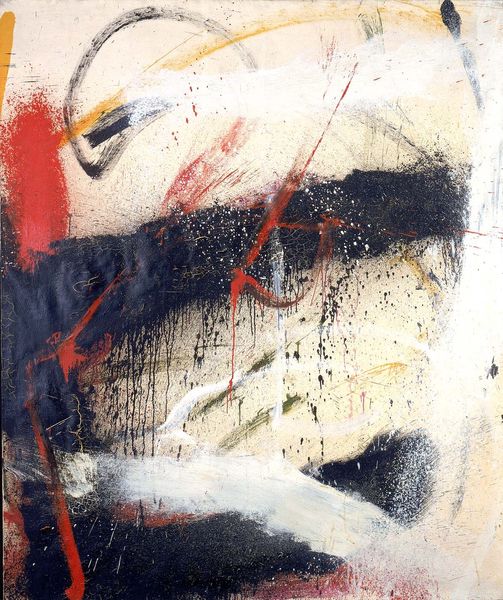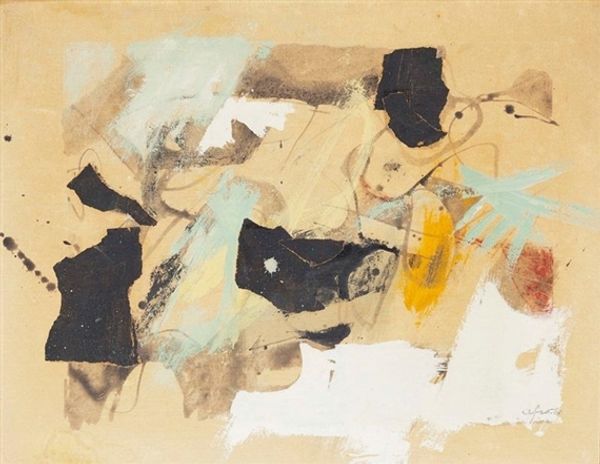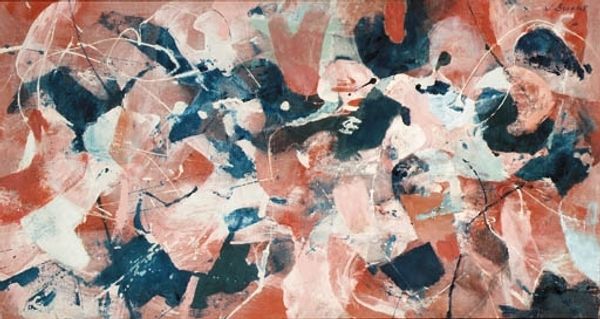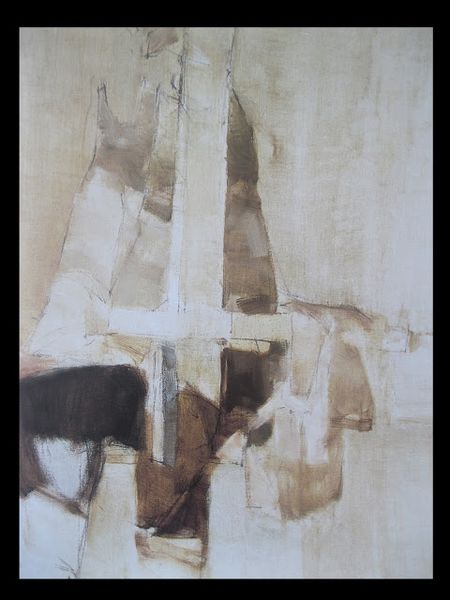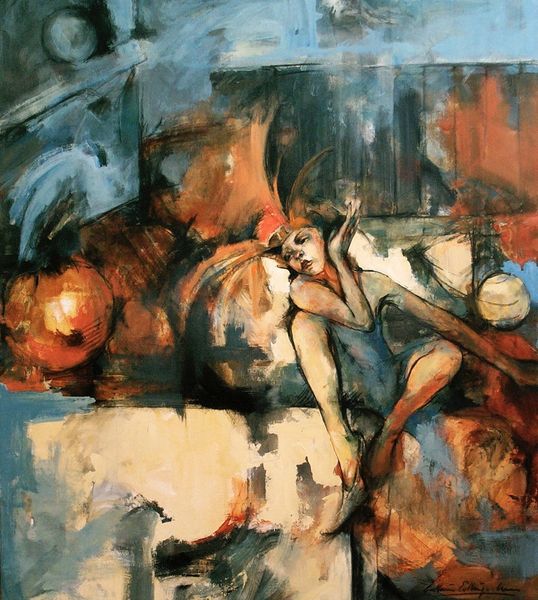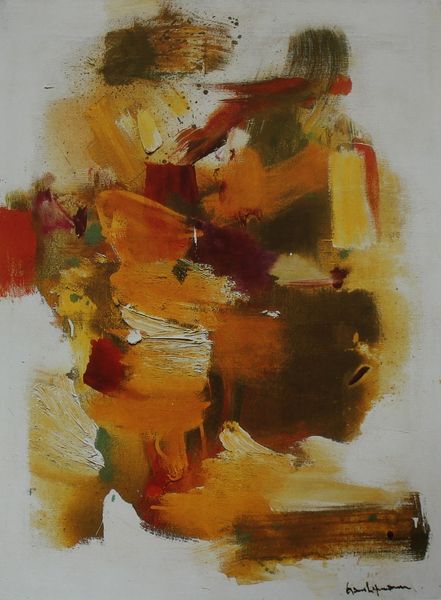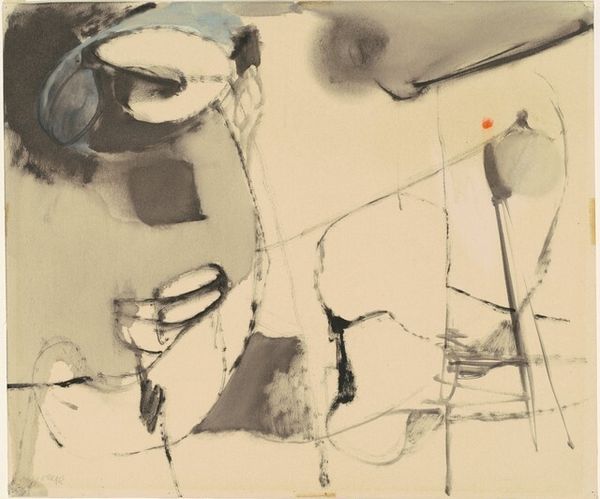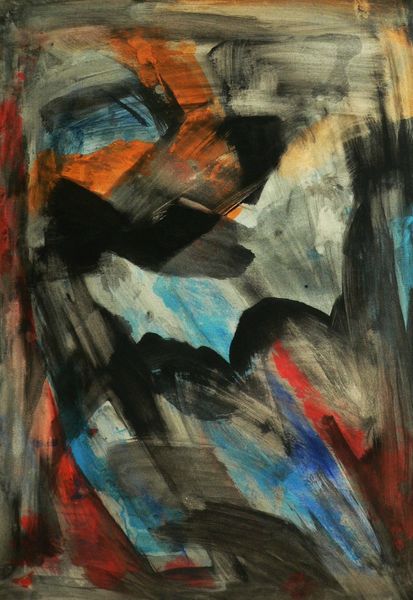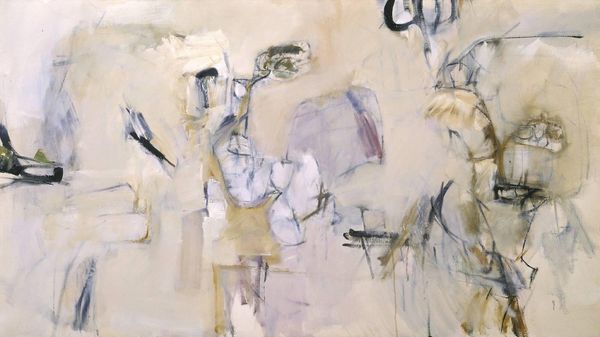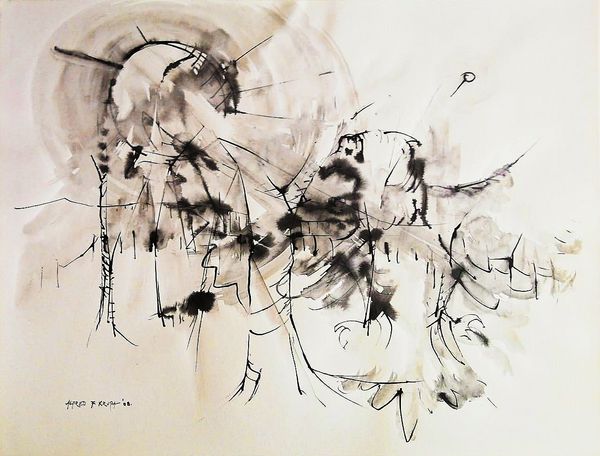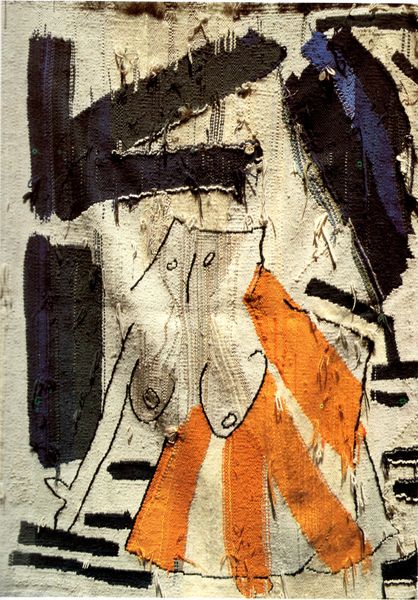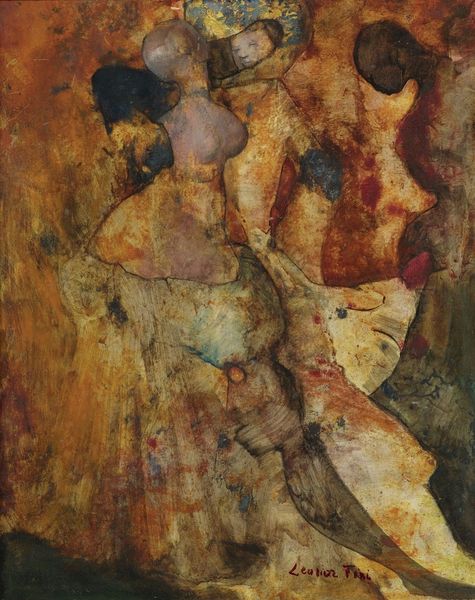
painting, watercolor
#
abstract-expressionism
#
abstract painting
#
painting
#
form
#
oil painting
#
watercolor
#
bay-area-figurative-movement
#
abstraction
#
line
#
watercolor
Dimensions: 56 x 46 cm
Copyright: Richard Diebenkorn Foundation
Editor: This is Richard Diebenkorn’s "Albuquerque #3" from 1951, done in oil and watercolor. It’s primarily pale shades with superimposed black lines. The washes of color are soft, but the lines give it some tension, even a slightly unsettling mood. What elements stand out to you? Curator: Notice the masterful orchestration of line, color, and form. The composition relies on the tension between these broad, soft fields of color and the assertive, almost architectural lines. Observe how the lines aren't simply outlines; they define planes and create a sense of spatial ambiguity. The limited palette—muted pinks, creams, and greys—further emphasizes the structural relationships within the work. Do you see how certain lines appear to advance while others recede, flattening and deepening the picture plane simultaneously? Editor: Yes, I see that! It's like he’s both building up and tearing down the space at the same time. The lines create an almost Cubist effect, but with a much lighter touch. How does that tension play into its overall meaning? Curator: Meaning, in this context, isn't necessarily about representation, but about the act of seeing itself. The painting challenges our perception. The success lies in the dynamism achieved through formal elements alone; it's a self-contained system of visual relationships, independent of external narratives. The composition, color, and the line create a balanced yet volatile situation on the canvas. Editor: So, it's about the pure visual experience. The artist’s process of building and subtracting shapes, not any one specific shape, that conveys the meaning? Curator: Precisely. The viewer is invited to participate in the visual process, to deconstruct and reconstruct the painting according to their own perception. Editor: That's fascinating. I always thought Abstract Expressionism was just about emotion, but this makes me see the importance of formal structure. Curator: Indeed. Close observation reveals a complex interplay of elements, proving the power of abstract forms to communicate and engage us on a purely visual level.
Comments
No comments
Be the first to comment and join the conversation on the ultimate creative platform.
